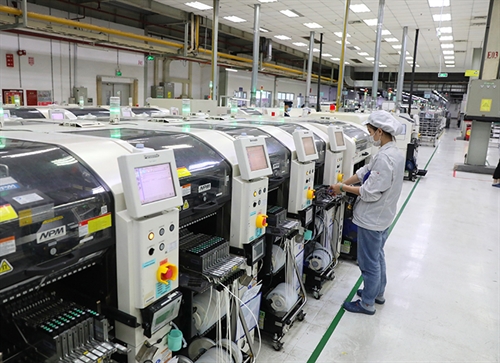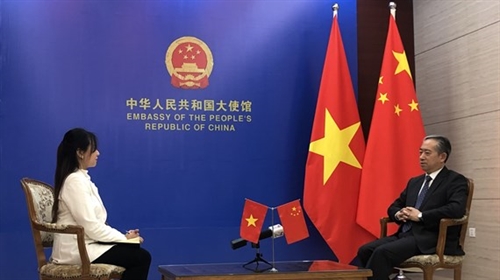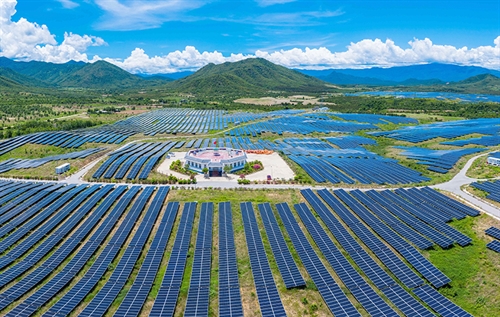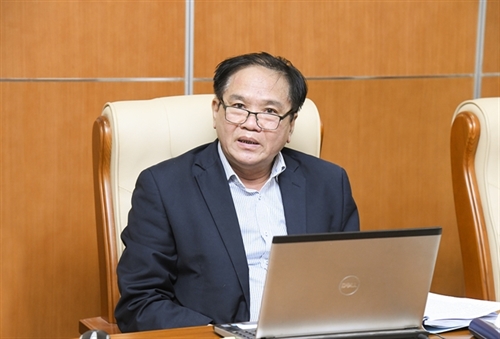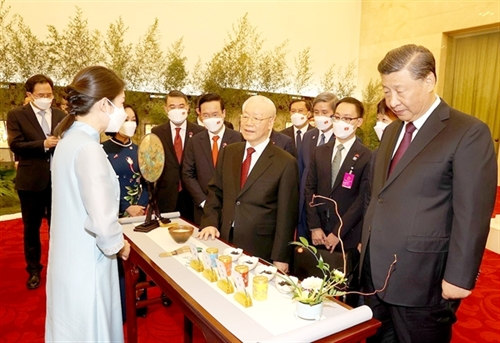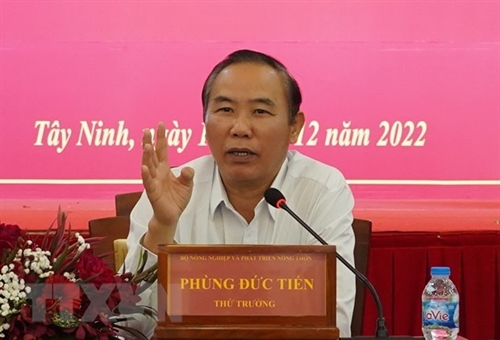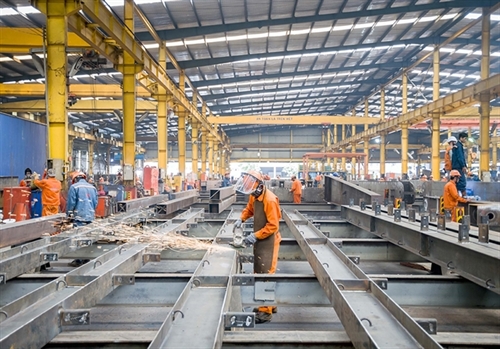Nguyen Xuan Quang, LL.D., and Le Nhat Hong
Ho Chi Minh City University of Law
The Law Amending and Supplementing a Number of Articles of the Law on Intellectual Property (the Law), passed on June 16, 2022, by the 15th National Assembly, contains important revisions regarding copyright, with a view to promoting and protecting creative works in literary, artistic and scientific fields and stepping up Vietnam’s international integration, especially its efforts to improve the legal framework on intellectual property. This article gives an insight into such novel provisions.
New copyright terminology
Theoretically, copyright (and related rights) means a type of ownership right of legal holders to literary and artistic works. In order to define more clearly protectable subject matters of copyright and related rights compared to its 2005 and 2009 versions, the Law provides new definitions of derivative works with an additional description that these works are “…created on the basis of one or more than one existing work through translation…” as well as their new forms of being“…musically transformed and otherwise transformed.” This change conforms to the 1886 Berne Convention for the Protection of Literary and Artistic Works[1].
Regarding acts of reproduction, the Law defines more clearly reproduction as the making of copies of the whole or part of a work or a phonogram or video recording by whatever mode or in whatever form. This clarification is necessary as the previous definition in the 2009 version did not cover the scope of reproduction acts which might lead to an improper understanding that reproduction is the making of copies of the whole work only.
The Law also defines the terms of royalty, technological measures for rights protection, and effective technological measure[2]. These definitions help clarify matters on copyright protection in general. Accordingly, the transfer of copyright or copyright-related remuneration may be paid in money amounts to transferring parties or authors. Besides technological measures for rights protection that use any techniques, technologies, equipment or devices that, in the course of their normal operation, have the main function of protecting copyright and related rights against acts performed without permission of copyright holders or related rights holders; and effective technological measures that may be taken by copyright holders or related rights holders to control the use of works, performances, phonograms, video recordings, broadcasts or encrypted program-carrying satellite signals through access control applications, protection protocols or reproduction control mechanisms, may be implemented to protect copyright.
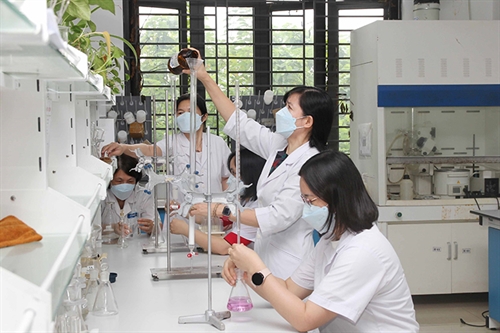 |
| Female scientists of the Hanoi University of Pharmacy’s Faculty of Pharmaceutical Chemistry and Technology__Photo: Phuong Hoa/VNA |
| Female scientists of the Hanoi University of Pharmacy’s Faculty of Pharmaceutical Chemistry and Technology__Photo: Phuong Hoa/VNA |
The Law revises the definitions of authors and co-authors[3]. Specifically, author refers to a person who directly creates a work. In case two or more persons have jointly created a work with the intention that their contributions are combined as a whole in the complete work, they are regarded as co-authors[4]. Persons who provide support, contribute opinions or provide materials for others to create works are not regarded as authors or co-authors. Relationships between authors and co-authors are also specifically provided by the Law. Accordingly, they are required to reach an agreement or unanimity on the exercise of moral rights and economic rights to their works, unless such works have separable parts that may be used independently without causing prejudice to parts of other co-authors or unless otherwise provided by law[5].
Revised provisions on moral rights and economic rights
As per the intellectual property law, authors have moral rights and economic rights to their copyrighted works.
The Law adds a new significant moral right, namely the right to title copyrighted works[6]. Authors may license this right to organizations or individuals that acquire economic rights specified in Article 20.1[7].
Regarding economic rights, the Law adds many provisions detailing some of these rights, listing exceptions to copyright holders’ right to prevent or prohibit others from reproducing copyrighted works, and providing the right of authors and copyright holders to computer programs. Specifically as follows:
It provides in greater detail the right to display copyrighted works to the public. Accordingly, authors may display directly or indirectly through phonograms, video recordings or any technical devices their works at places accessible to the public on the condition that the public cannot freely choose the time of display and each part of works to be displayed.It also further elaborates on the right to reproduce, distribute or import copyrighted works for distribution to the public. Accordingly, authors may directly or indirectly reproduce the whole or part of their works by any means or in whatever form, except where they are prevented or prohibited by copyright holders, and distribute or import copyrighted works in the physical form for distribution to the public by sale or other forms of ownership transfer, unless otherwise provided by law. It adds exceptions to the right of copyright holders to prevent or prohibit other entities or persons from reproducing, distributing or importing copyrighted works. Accordingly, copyright holders may not prevent or prohibit other entities or individuals from reproducing copyrighted works only for exercising other rights in accordance with the Law; temporarily reproducing such works according to a technological process or in the course of operation of devices for transmission within a network among third parties through intermediaries; lawfully utilizing such works not for independent economic purposes, with copies thereof automatically and irretrievably deleted; or subsequently distributing or importing for distribution original works or copies thereof that have been permitted by copyright holders. These new provisions are quite necessary as technology has become an essential part of the process of storing and distribution of copyrighted works and help ensure that technological systems, when being used for exercising the reproduction right, must satisfy the requirement on non-economic copy use purposes and that reproduced copies will be automatically and irretrievably deleted.It makes some changes to the right to make derivative works and copy right to cinematographic works, dramatic works, computer programs and data collections. Specifically, the making of derivative works must not infringe upon moral rights of authors of original works[8]. The Law adds many types of persons involved in the making of cinematographic works who may be regarded as co-authors who have certain moral rights depending on the importance of their roles in the work making. It also additionally specifies cases where music works or screenplays in cinematographic works or dramatic works are used independently, authors may enjoy copyright to such screenplays or music works independently, unless otherwise agreed upon in writing.The Law adds one specific right of computer program authors or copyright holders. By this right, computer program authors or copyright holders may reach written agreement on modification or upgrading of such programs. Organizations and individuals having the right to lawfully use copies of computer programs may make backup copies to replace such copies once they are deleted or damaged or can no longer be used but may not transfer backup copies to others[9].
Use of published works without requiring permission or payment[10]
The title of Article 25 is changed from “Cases of use of published works in which permission of authors or payment of royalty or remuneration is not required” in the 2009 version into “Exception cases in which copyright is not regarded as being infringed upon”. The shortened title of this Article conveys a clearer implication that entities or persons other than authors and copyright holders may be entitled to use copyrighted works in specified cases. However, this regulation requires users to provide information on names of authors and origin of works they use, and the use “not for commercial purposes” for all specified cases.
Notable exceptions include:
Duplication of copyrighted works for personal scientific research or learning and not for commercial purposes. The previous versions recognized only the right to reproduction, self-reproduction or reasonable citation of works for learning and teaching purposes and did not require the “not for commercial purposes”.Free-of-charge use of copyrighted works in official-duty activities of state agencies[11].Use of copyrighted works in school and university libraries and not for commercial purposes, covering reproduction of works kept in libraries for preservation on the condition that copies must be marked as copies for archive and with limited access in accordance with the library regulations and archive laws; reasonable reproduction of part of works with a reproducing device for other persons’ research or learning purpose; reproduction or transmission of archived works for inter-library loan via the computer network, on the condition that the number of readers at a time does not exceed the number of copies of the works held by the libraries.Reproduction by re-publishing on newspapers, periodicals or broadcasts or otherwise communicating to the public of lectures or speeches presented before the public within a scope suitable to the purpose of reporting current affairs.Use of works by visually impaired people, people with print disability or people with other disabilities who are unable to access and read print works by normal methods and their nurturers or caretakers and organizations satisfying the Government-specified conditions, which must be organized by agencies or organizations in charge of caring for these people. This exception is conformable with Vietnam’s commitments in the Comprehensive and Progressive Agreement for Trans-Pacific Partnership (CPTPP).Use of copyrighted works without requiring permission but payment[12]
Article 25 also specifies cases of use of published works in which permission of authors is not required but the payment of royalty and provision of information on names of authors and sources and origin of such works are required in order to respect moral rights of authors.
Compared to the previous versions of the Law, it adds the case where copyrighted works are permitted by copyright holders to be fixed on phonograms or video recordings to be published for commercial purposes. In this case, users are not required to obtain permission but have to pay royalty to copyright holders since the commencement of the use as agreed upon. In case no agreement can be reached, the parties must comply with the Government’s regulations. This provision conforms to the reality that copyrighted works have been widely published on social media and the protection of work copyright and recognition of rights and obligations of related parties have been clearly provided.
This Article adds the right to enjoy preferences applicable to member states of the treaties on copyright[13]. Specifically, Vietnamese organizations and individuals that enjoy concessions applicable to developing countries regarding the right to translate works from foreign languages into Vietnamese and the right to reproduce such works in their teaching or research activities not for commercial purposes under treaties to which the Socialist Republic of Vietnam is a contracting party must comply with the Government’s regulations. Those that wish to exploit or use published works of Vietnamese organizations and individuals but cannot contact or identify their copyright holders must comply with the Government’s regulations.
Revised provisions on acts infringing upon copyright[14]
Limitations on copyright are also clearly set out in Article 28 by enumerating infringements upon copyright, in addition to acts infringing upon moral rights and economic rights of authors and copyright holders, in a more general manner compared to the previous versions of the Law. Such infringements are divided into the following groups:
Intentionally canceling or deactivating effective technological measures taken by authors or copyright holders to protect copyright to their works. This act does not directly infringe upon moral rights and economic rights of authors or copyright holders but negatively affects the protection by these persons of their own rights, and therefore may be regarded as an indirect infringement. Manufacturing, distributing, importing, offering for sale, selling, promoting, advertising, marketing, leasing or stockpiling for commercial purposes equipment or products, introducing or providing products or parts to deactivate effective technological measures for copyright protection.Intentionally deleting, removing or modifying rights management information without permission of authors or copyright holders when knowing or having grounds to know that the performance of such acts will instigate, enable, facilitate or conceal acts of infringing upon copyright. This act is regarded as an act facilitating or concealing the performance of copyright infringements.Intentionally distributing, importing for distribution, broadcasting, communicating or providing to the public copies of works when knowing or having grounds to know that rights management information has been deleted, removed or modified without permission of copyright holders; or when knowing or having grounds to know that the performance of such acts will instigate, enable, facilitate or conceal copyright infringements.Failing to implement or improperly implementing regulations concerning legal liability of intermediary service providers.-
[1] Article 2.3 of this Convention stipulates: “Translations, adaptations, arrangements of music and other alterations of a literary or artistic work shall be protected as original works without prejudice to the copyright in the original work.”[2] Article 1.1 of the Law.[3] The 2005 and 2009 versions of the IP Law did not specifically define authors.[4] Article 1.4 of the Law.[5] For example: A specialized reference book consists of articles of different authors who may be regarded as co-authors of such book and each of whom may lawfully exercise moral rights and economic rights to his/her article(s) without causing prejudice to articles of other authors.[6] Article 1.5 of the Law.[7] Of the 2009 IP Law.[8] The Law adds the case where derivative works, which are likely to affect original works, may still be made with written consent of authors of original works.[9] Article 1.6 of the Law.[10] Article 1.7 of the Law.[11] In the author’s opinion, there should be limits on this kind of use to prevent abuse and copyright infringement.[12] Article 1.7 of the Law.[13] Clauses 4 and 5 of revised Article 26.[14] Article 1.8 of the Law.
